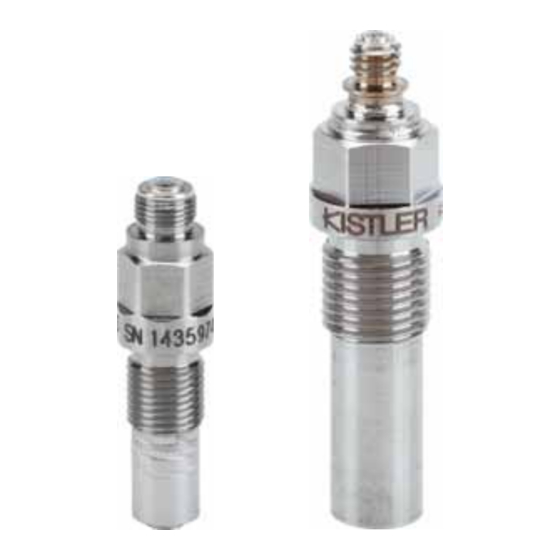
Summarization of Contents
Important Notes
Safety Precautions
Details essential safety instructions for handling and operating the low level force sensor safely.
Unpacking and Inspection
Instructions for checking packaging for damage and verifying delivered accessories.
Usage Guidelines
Guidelines for using the low level force sensor, including environmental conditions and handling.
Using the Manual
Advice on reading and keeping the operating instructions for effective use and reference.
General Description
Applications of Low Level Sensors
Describes the applications and main areas where low level force sensors are utilized.
Construction and Principle
Details the construction and functional principle of the low level force sensors, including crystal package.
Sensor Characteristics
Details the specific characteristics of the low level force sensors.
Installation and Startup
Important Installation Considerations
Highlights crucial points for correct installation and handling of precision instruments.
Installing the Sensor
Provides detailed instructions for the correct mounting of low level force sensors.
Adaptation Possibilities
Describes various methods for adapting the sensor for force introduction.
Operation
Setting the Charge Amplifier
Guidance on setting sensitivity and measuring range on the charge amplifier.
Measuring Signal Polarity
Explains the polarity of the charge signal produced by compressive force.
Signal Resolution
Defines signal resolution and its dependence on the charge amplifier and sensor.
Quasistatic Measurements
Discusses limitations and considerations for static measurements with piezoelectric sensors.
Tips for Good Measurements
Provides practical advice to ensure accurate and reliable measurement results.
Maintenance
Recalibration
Information on when and how to recalibrate the sensor, recommending every 2 years.
Maintenance Procedures
Outlines routine checks and cleaning procedures for maintaining the sensor.
Troubleshooting
Fault Finding and Remedies
Lists common faults, their causes, and recommended remedies for the sensor and system.
Repairing the Sensor
Specifies cases where the sensor cannot be repaired and refers to factory procedures.
Technical Data
Sensor Dimensions
Provides detailed dimensional drawings for the sensors.
Accessory Dimensions
Shows dimensions for various sensor accessories.
Included Accessories
Lists the accessories that are included with each sensor type.
Optional Accessories
Details optional accessories available for use with the low level force sensors.
Annex
Glossary of Terms
Defines key terms and technical vocabulary used in the manual.
Measurement Uncertainty
Explains systematic and random errors, and how to quantify measurement uncertainty.
Linearity and Best Straight Line
Defines linearity, best straight line, and how they are determined for sensors.
Frequency Range
Discusses the useful frequency range of piezoelectric sensors and factors limiting it.
Temperature Influence
Details temperature errors on zero point and sensitivity, and methods to mitigate them.
















Need help?
Do you have a question about the 9217A1 and is the answer not in the manual?
Questions and answers